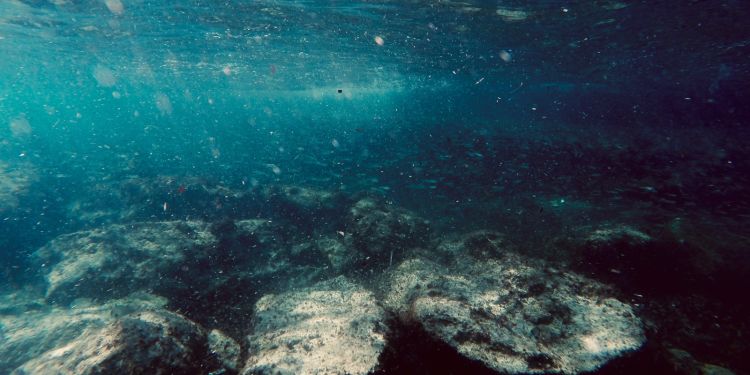Microplastics are pervasively buried in the deep sea

A new study reveals that microplastics are present in sediments throughout the Whittard Canyon – a submarine canyon off the coast of the UK.
Despite the different processes that transport and bury sediments in the Whittard Canyon, microplastics are consistent down to 10 centimetres under the sea floor.
This shows that there are multiple underwater processes transporting and burying microplastics, not only turbidity currents as previously thought.
These processes bury microplastics in sediments that predate the mass production of plastic, meaning that microplastic analysis in sediments may not be a reliable way to research the historical impacts of plastic production.
“Microplastic pollution is pervasive in the deep sea,” said lead author of the study, Dr Ed Keavney.
“The complex process interactions in submarine canyons make calculating the deep-sea microplastic flux challenging.
“This means more seafloor ecosystems may be vulnerable to microplastic pollution, and that identifying the Anthropocene boundary using microplastics in deep-sea sediments may be flawed.”
Missing processes
Turbidity currents – underwater avalanches of sediment – create large build-ups of sediment, transport nutrients and oxygen to the deep sea, and the deposits host important seafloor ecosystems.
It was previously thought that turbidity currents were solely responsible for transporting microplastics; Dr Keavney’s research team previously found direct evidence of microplastic transport in the Whittard Canyon.
However, turbidity currents are not the only processes active in the Whittard Canyon and other submarine canyons around the world, and these other processes are under-represented in research.
The research team analysed sediment samples from nine locations throughout the canyon to find out the levels of microplastic pollution.
Although the sample locations had variable sediment accumulation rates, the concentration of microplastics was consistent across the samples.
This shows that turbidity currents aren’t the only process that transport and bury microplastics on the seafloor, and that other deep-sea currents (eg, internal tides) and sub-seafloor processes (eg, biological processes) are also active.
Dr Keavney added: "We’ve used a multi-disciplinary approach to show that microplastic pollution is pervasive in submarine canyons. These canyons play a crucial role in transporting sediment, oxygen, nutrients, and microplastics to the deep sea.
“Not only is microplastic pollution pervasive across the different depositional environments of the Whittard Canyon, but they are also present in sediments that were deposited before the mass production of plastic in the 1950s. This makes defining the Anthropocene boundary in deep-sea sediments challenging.”
Digging deeper
A research cruise will return to the Whittard Canyon in 2025, with the provisional plan to collect sediment cores for microplastic analysis from the Celtic Fan.
The Celtic Fan is located further into the deep sea, beyond the Whittard Canyon.
This work could help answer questions related to why 99% of ocean plastic has not been accounted for in existing models.
Co-author Ian Kane will continue to work with biologists at the University of Manchester to help better understand the distribution of microplastics in marine organisms.
More information
- Read ‘The combined role of near-bed currents and sub-seafloor processes in the transport and pervasive burial of microplastics in submarine canyons,’ co-authored by Ed Keavney, Ian A. Kane, Michael A. Clare, David M. Hodgson, Veerle A.I. Huvenne, Esther J. Sumner, Jeff Peakall, Furu Mienis, and Jonathan Kranenburg.
- Previous news: Scientists discover deep-sea microplastic hotspots driven by underwater avalanches.




